Archives
Even Wizards need a Plumber
To be a plumber is to be a Wizard (ace, adept, champion, genius, hotshot, magician, mavin, sensation, star, superstar, virtuoso, whizz, wiz)
This was taken from the Sydney Morning Herald on 26th August, 2009.

SSSSSire CCCCertainly SSSSSounds like a job for The Lone Drainer and Pronto
Why you should ‘Dial Before You Dig’
Before carrying out any excavation for plumbing repairs, your licensed plumber should do a “Dial before you Dig” check on your property and surrounds.
This process shows where gas, water, sewer, stormwater, telecom and electric services owned by all utilities are located.
Although this is an extreme case, check out what could happen if you don’t know what lies beneath:
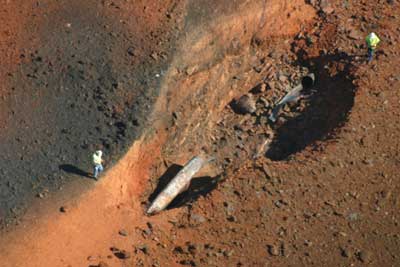
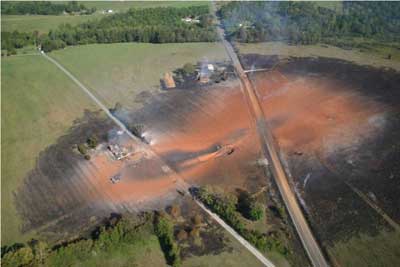
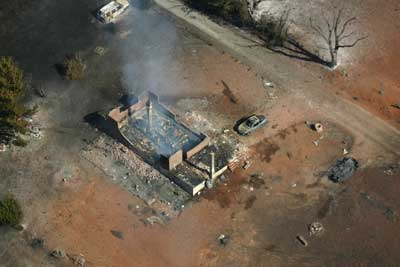
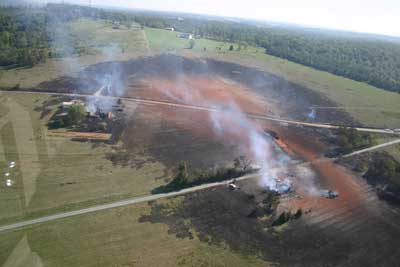
This massive explosion occurred in the USA during September 2008. Although it was caused by pipe corrosion, and not by a farmer digging as several emails have suggested, the extreme destruction seen in the photographs above shows the extensive damage that can be caused by an exploding gas pipe, and how obvious it is that this should be avoided at all costs.
If you’re not sure about the condition of your gas pipes, call a licensed plumber, and remember to always dial before you dig!
PVC Pipes Blocked by Hills Weeping Fig
The Hills weeping fig (ficus microcarpar var.) is a beautiful tree which in some areas provides a shady archway for many streets in our Sydney Eastern suburbs.
But why are the residents of these streets pulling out their hair?
The Hills weeping fig is like Jekyll and Hyde.
Dr Jekyll brings shade in summer; tree lined streets become a breezeway, cooling our homes as their majestic branches cast shade and protect us from the searing summer heat, attracting birds to feed on their fruit twice a year.
But, Mr Hyde is lurking. Those same fruit bring flying foxes…and other mysteries.
My interest in this tree is the power of its root system. Their reach is widespread, sometimes 3 or 4 or more times wider than they are high. The root system will move stone walls, lift concrete footpaths and driveways and of course invade sewer and stormwater pipes. The roots from this tree just keep on coming after they are internally pruned with an electric eel or “Rattlesnake” high pressure water drain cleaner.
Last week we attended to 4 tree root sewer blockages directly caused by the Hills Weeping fig.
The 2 blocked sewer pipes that particularly interested me were PVC sewer pipes.
Why is that interesting, I hear you ask?
Well… tree roots don’t grow into PVC pipes! …..or do they?
The Kensington blocked drain was in an established housing estate about 10 – 15 years old. The townhouse in question had no previous blocked drain history. The Hills weeping fig was about 30 metres away. Its root system had grown up to this house and had actually grown into the PVC pipeline through a screw-on cap that we plumbers call a cleaning eye. The fine roots had grown into the cap thread and multiplied inside the pipe thus causing the sewer blockage.
The Bellevue Hill blocked sewer was similar.
This house was built during the year of Sydney’s 2000 Olympic games after the long term owners, were tired of having blocked sewer pipes every 3 months, and tree roots “growing up through the back of the toilet”, amongst other reasons.
During the rebuild all the pipelines were installed in PVC pipes and fittings. The house finish was state of the art plumbing fixtures, with beautiful sandstone tiles around the outside of the house. All the pipes were concealed! No cleaning eyes! Why would we need access to the pipes as they have all been installed in tree root proof PVC? The nearest fig tree was 30 odd metres away.
Well, what started as a simple blocked floorwaste, grew to removing that beautiful toilet suite to clear the blocked sewer pipe. We used the “Rattlesnake” high pressure water drain cleaner to remove tree roots from the blocked pipeline. When the blockage was cleared we carried out a camera survey of the pipeline. About 14 metres downstream the camera showed the remnants of the cut tree roots, but just as important, our drain camera survey showed the PVC pipe had been squashed. What was a round internal pipe, was now oval shaped with a crack in at least 1 of the fittings.
Who said tree roots don’t grow in PVC sewer pipes?
Beware Mr Hyde!
https://www.thelonedrainerandpronto.com.au/vaporooter.php
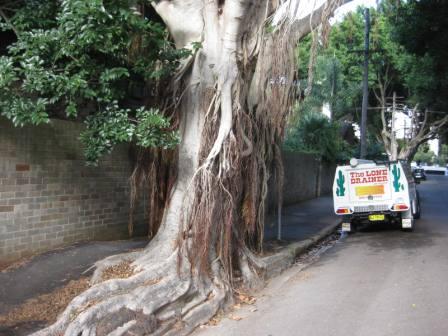
Hills Weeping Fig Tree
Use only Genuine Pipes! for Plumbing
Today’s post is courtesy of Dr Marc Dussault. Check him out at:
http://www.ExponentialPrograms.com/business/blog
Piping Specifications
Mr. Santa Singh is a brilliant engineer of College of Engineering Patiala and Mr. Banta Singh is his boss and a gold medalist of Jalandhar University. Both of them are serving for Punjab Pipes whose owner is Ms. Gurujit Kaur. In one of the tenders Mr. Santa Singh has declared the pipe specifications.
Prepared by: SANTA SINGH Approved by: BANTA SINGH
NOTE: Some vendors are now able to supply pre-rusted pipes. If available in your area, this product is recommended, as it will save a great deal of time at the job site.
Plumbing Apprenticeship – ‘Giving back to the Community’
At The Lone Drainer and Pronto we like “Giving Back” to the community because the Plumbing industry has been very good to me and my family.
Every year around January we have anywhere from 5 to 20 boys (or their mothers) contact us inquiring about a plumbing apprenticeship. We have trained 9 apprentices in 20 years (plumbers apprenticeship is 4 years).
In early January we received the usual phone calls, letters and emails from people asking aboutplumbing apprenticeship. One day we received a call from a lady (she sounded late 40’s early 50’s) asking for a plumbing apprenticeship. I replied saying, “with the greatest respect, you sound a little old to be starting an apprenticeship.”
You could almost hear this lady blushing down the phone… She said, “I’m ringing for my son.” She told me all he ever wanted to be was a plumber! So we talked a little about her son and about his experience and she said he was very shy! I asked her to get him to ring and speak to me if he was keen about trying to develop the skills that he would need in his preferred occupation.
Three days later her son “Francis” rang and he told me how they had laughed about my quip about his mum being “a little old to start”. He sounded like a great kid and I invited him over to our office to talk. I showed him around our office, workshop and store and he was able to take a look at plumbing stuff, pipes and fittings. He loved the experience! I could not take him on at that time, but invited him to come back at his leisure and ask questions or check out anything about plumbing that he was interested in.
Francis came back twice over the next few weeks and about a month later, he rang me to say he had got an apprenticeship with a plumbing company near his home. He sounded completely different to the shy kid who got his mum to ring. He said he had the confidence to apply for a job because the things we had shown him, the pipes, the fittings, the equipment, the jargon, had given him enough confidence to get him over the line at another job interview.
He thanked me profusely.
I see Francis at local plumbing suppliers and he always has a smile and we have a chat. It’s great to know our industry will be in good hands in the future.
The distinction!
No matter how simple, always try to pass on the knowledge, educate and inform!
It’s like sowing a crop!
Plant the seeds … Add water and sunshine … Prepare for harvest.
